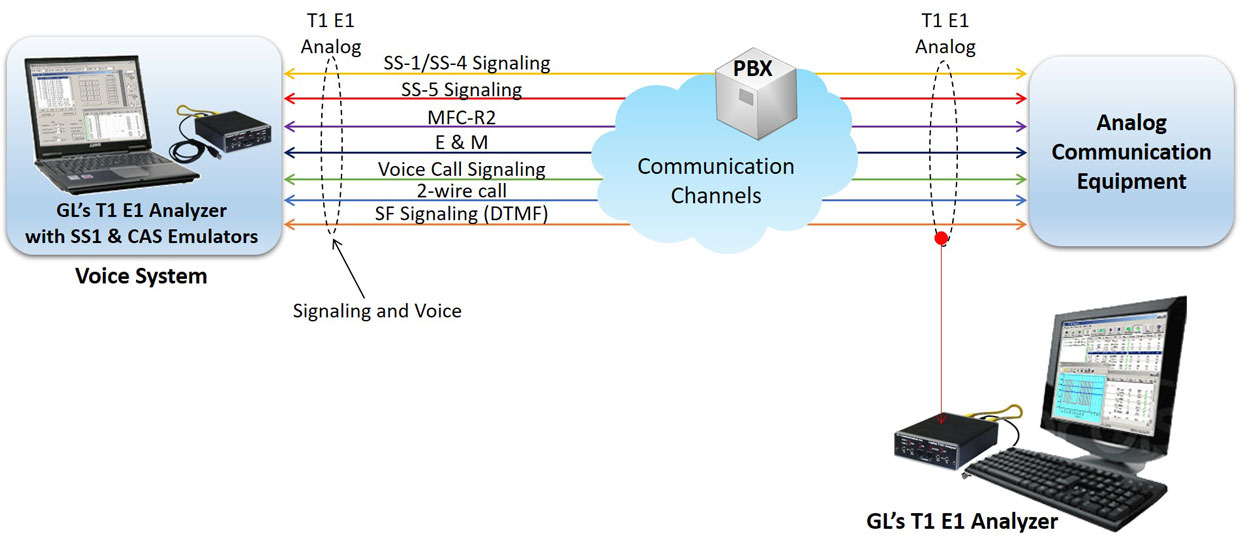Analog Legacy Protocol Enhancements
Gaithersburg, Maryland, USA - Oct 23, 2019 - GL Communications Inc., a global leader in telecom test and measurement solutions, addressed the press regarding the T1 E1 Protocol Analyzer software supporting legacy protocols (2-Wire call, 4-wire SS1/SS4, voice call signaling, single frequency signaling) analysis and emulation– applicable to air traffic management and communication.

“Signaling that occurs between switches (such as private branch exchanges (PBX), local exchange carrier and interexchange carrier) in telephone networks is sent either within the voice traffic (in-band signaling) or on a separate dedicated signaling channel (out of band signaling). The Channel Associated Signaling (CAS) is an in band method to set up and tear down calls. This supervisory signaling is carried as "on-hook" and "off-hook". The addressing is carried as DTMF (Dual Tone Multi Frequency) or as MF (Multi Frequency). This form of signaling is still used to route calls on the public switched telephone network including subscriber lines like 2-wire local loops, on trunks between central offices, and on access trunks such as PBXs”, said Vijay Kulkarni, CEO of GL Communications.
He further added, “GL’s CAS and SS1 legacy protocol test solution supports simulation and analysis of signaling and voice communications interface between the National Airspace System (NAS) Voice System (NVS) and the legacy NAS voice switches, utilizing Ground to Ground (G/G) trunks that support analog interphone call processing”.
In addition, “GL's T1/E1 Cards and USB units provide T1 and VF I/O jacks through which one can monitor or inject audio signals from or onto a designated T1 timeslot, or VF line. The T1/E1 hardware test platform along with analyzer and emulator supporting legacy protocols can generate selective SS-1/ SS-4 signaling, voice call signaling, 2-wire call, single frequency signaling, MFC-R2 analog, E and M signaling types of signaling and voice being carried over communication channel and can analyze these signals in real time”.
 Back to Press Releases Index Page
Back to Press Releases Index Page